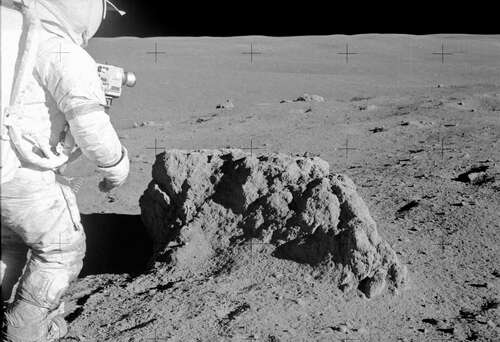Forward-looking: NASA is seeking input from potential partners on the feasibility of extracting oxygen from lunar rocks and dust. The US space agency is planning to return humans to the Moon’s surface, and for sustained habitation and work, future astronauts will require locally sourced resources.
NASA recently issued a new Request for Information (RFI) for Lunar Infrastructure Foundational Technologies-1 (LIFT-1), inviting collaboration with companies to develop technologies for a sustained human presence on the lunar surface. Interested parties are expected to design, develop, and demonstrate infrastructural technologies. However, NASA’s funding for the entire demonstration will not exceed $250 million.
Through the LIFT-1 RFI, NASA is specifically seeking viable concepts capable of extracting, processing, and storing oxygen from lunar regolith – a dusty surface deposit covering solid rocks on the Moon. The proposed solutions should complete these tasks within a single “lunar day,” roughly equivalent to one Earth month, and achieve this “without surface human interaction.”
Additionally, LIFT-1 is requesting third-party organizations to incorporate all necessary equipment for oxygen extraction onto a single lunar lander. This lander should possess sufficient power to conduct a minimum of three extraction cycles and be equipped with instruments to assess how regolith extraction on the Moon compares to simulated extraction missions on Earth.

In the LIFT-1 proposal, NASA envisions the commencement of commercial space operations with the extraction of tens of metric tons of oxygen per year. In subsequent phases, successful technology demonstrations are expected to evolve into highly functional resource-harvesting systems capable of providing “hundreds to thousands” of metric tons of oxygen, water, and rocket fuel, as well as feedstock for construction and manufacturing.
Last year, NASA identified 13 potential landing sites for future space missions around the Moon’s south pole. These sites, highlighted as potential regolith harvesting locations in the LIFT-1 RFI, are believed to contain substantial deposits of hydrogen, water ice, and other substances that could be extracted to support a sustained human presence on the Moon.
While LIFT-1 does not specify a deadline for the feasibility of a working resource-harvesting solution or its implementation during future astronaut missions, the agency has outlined specific requirements. Interested parties are invited to participate in a virtual industry forum on November 13 to engage in discussions on this matter.

